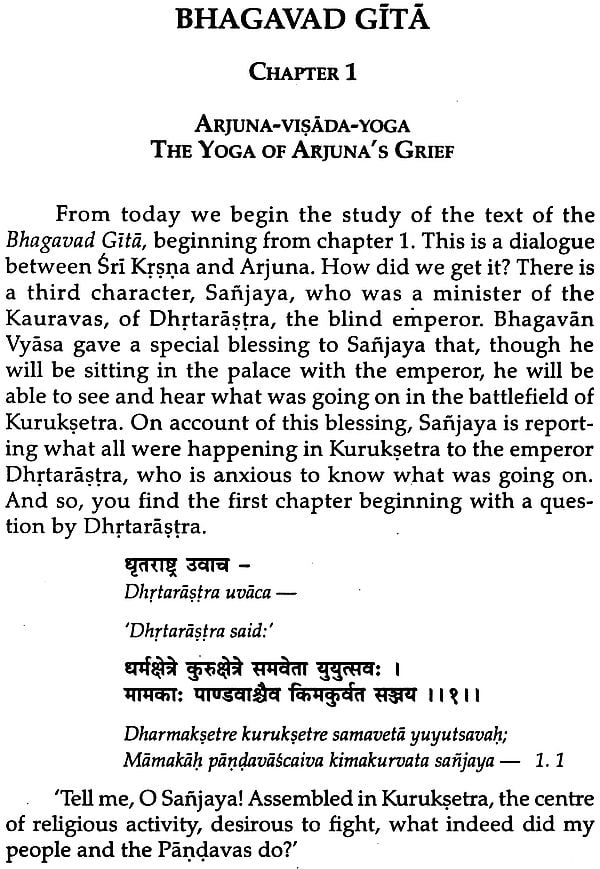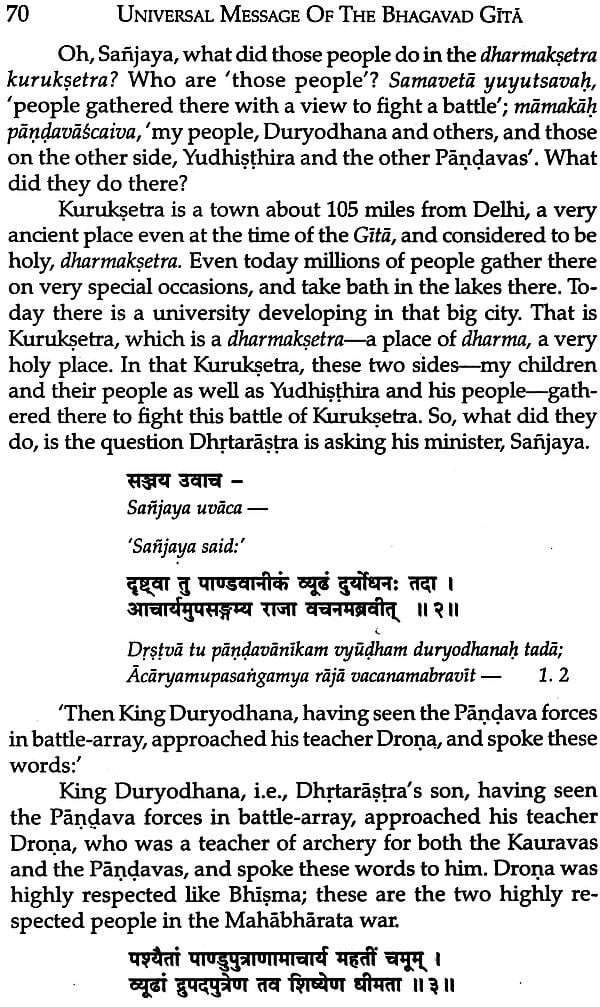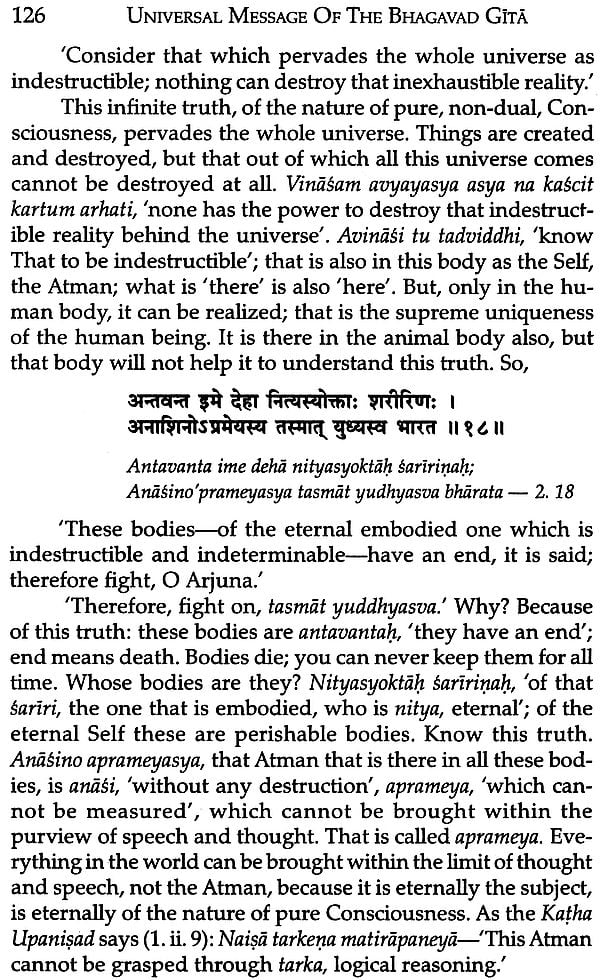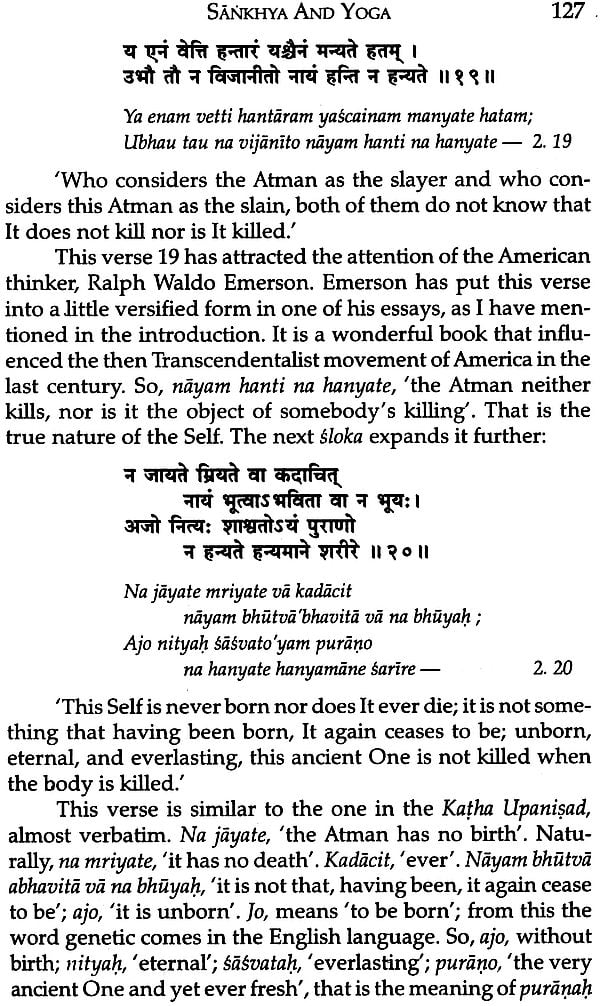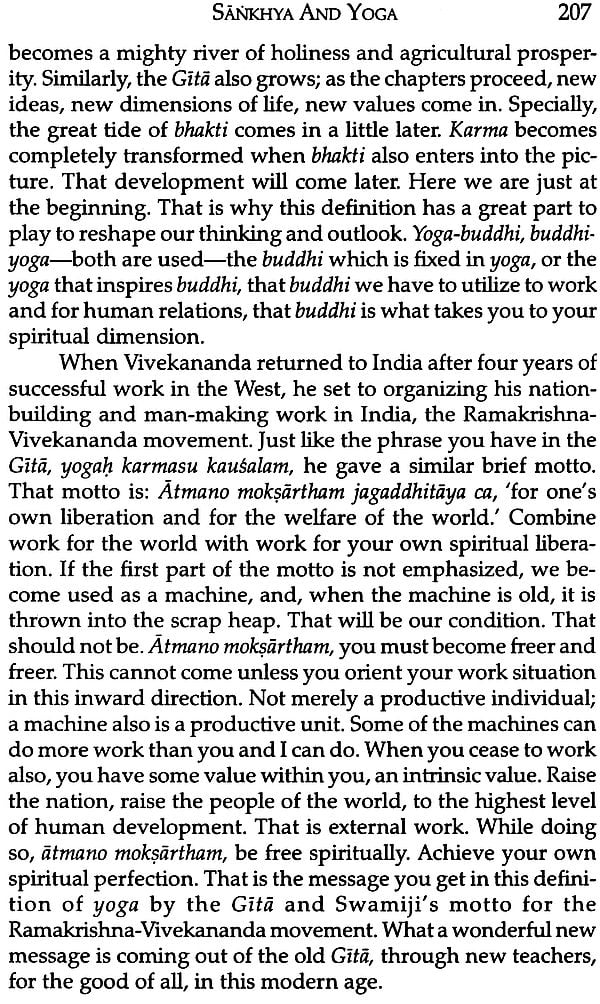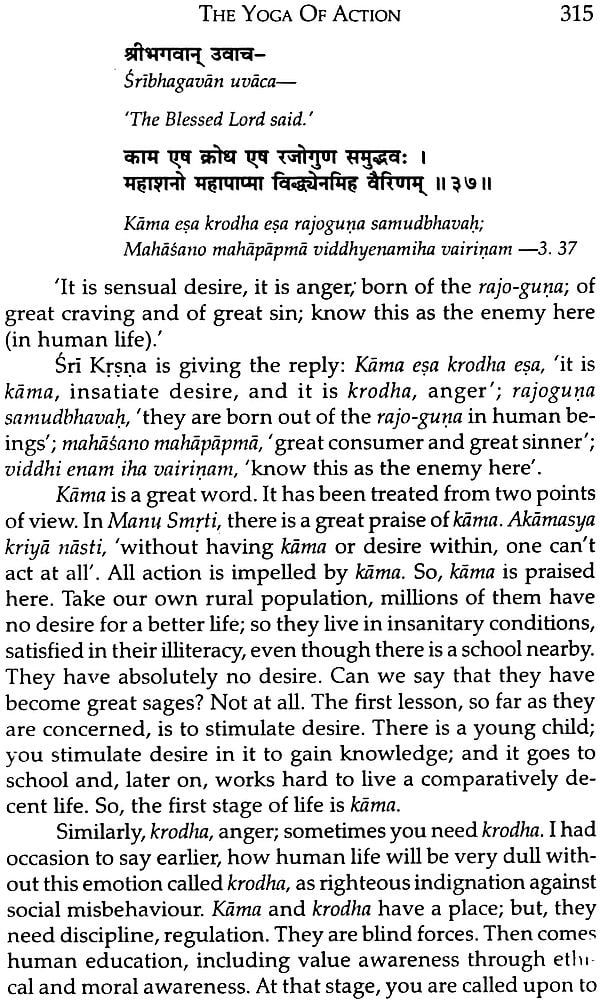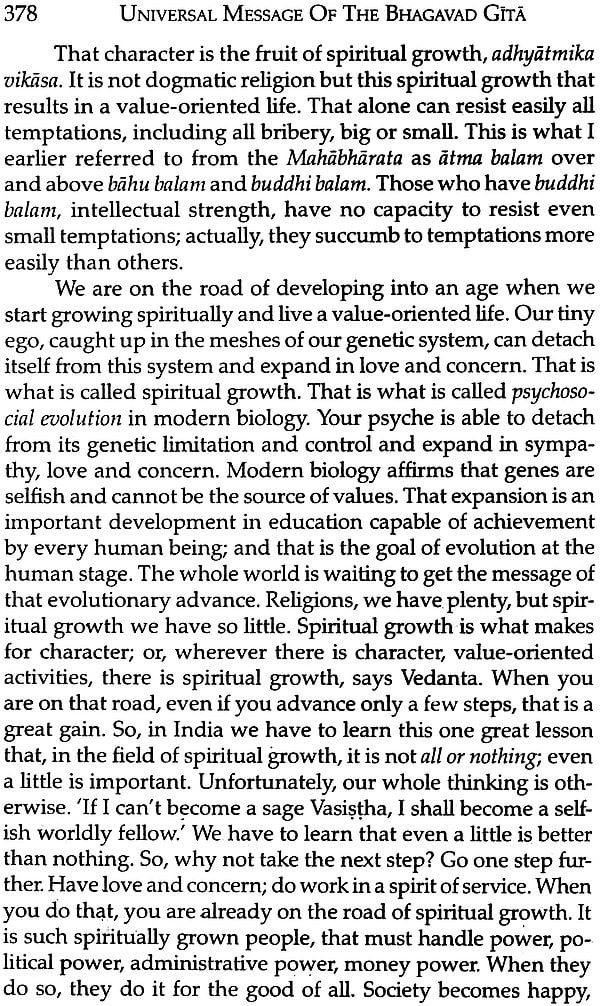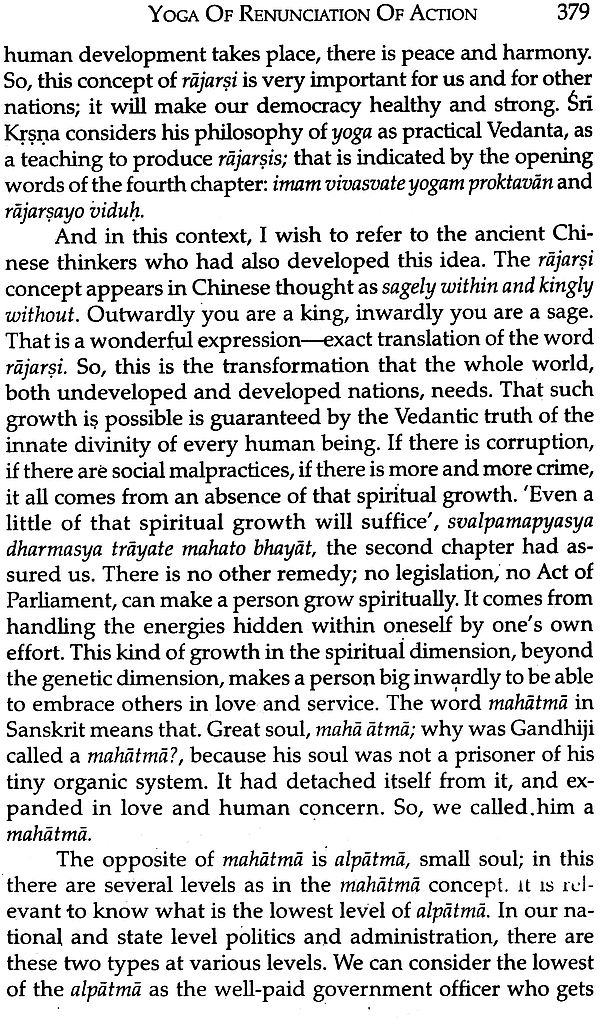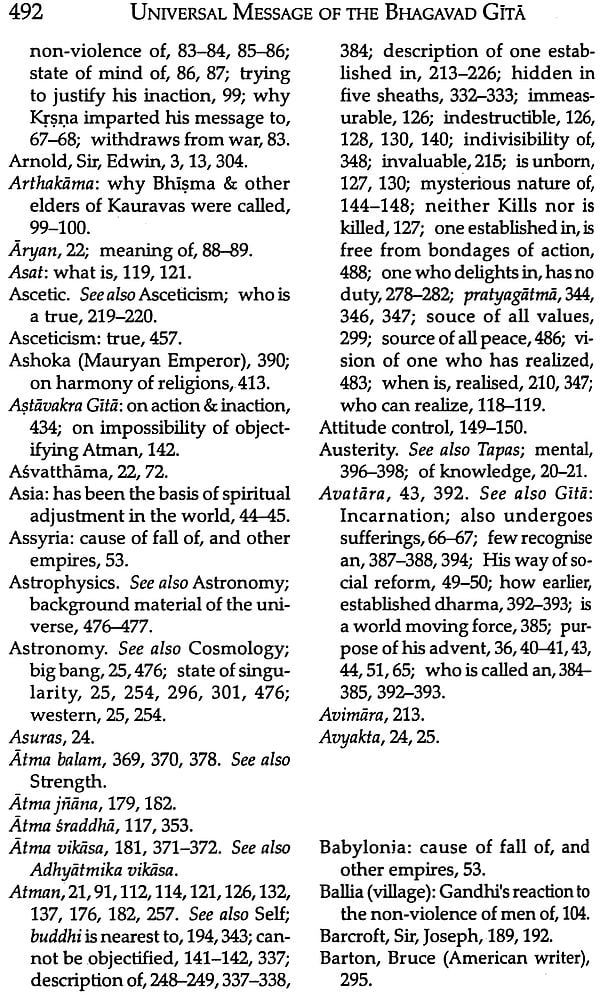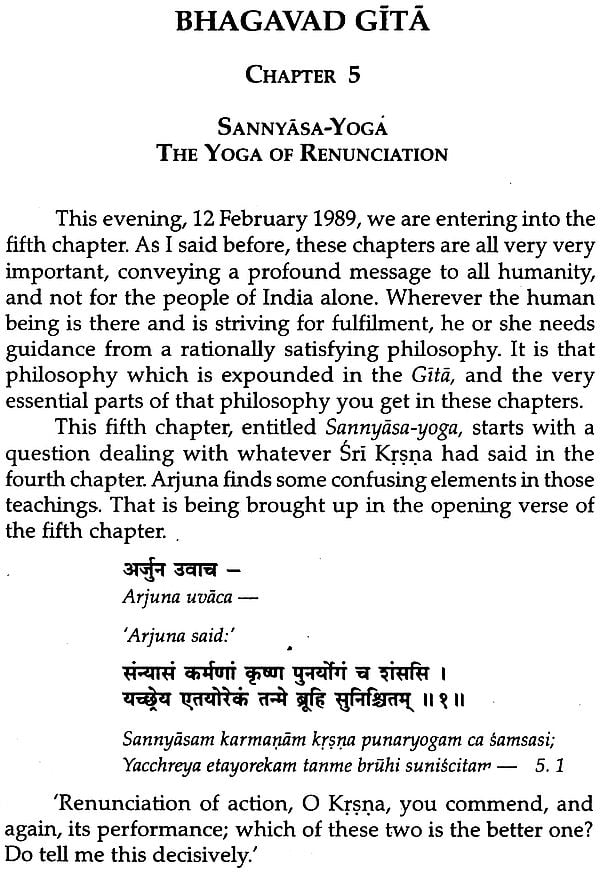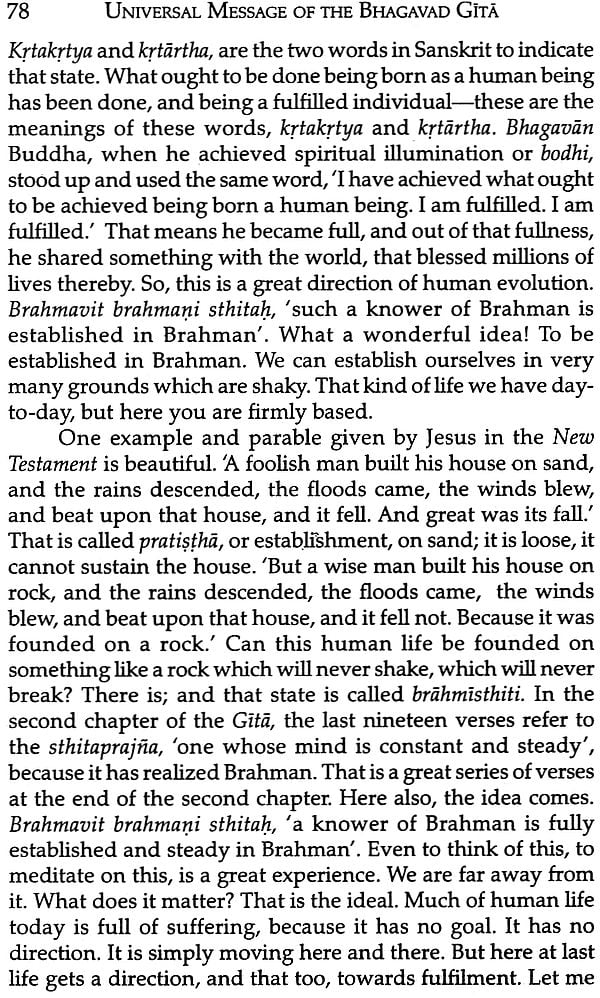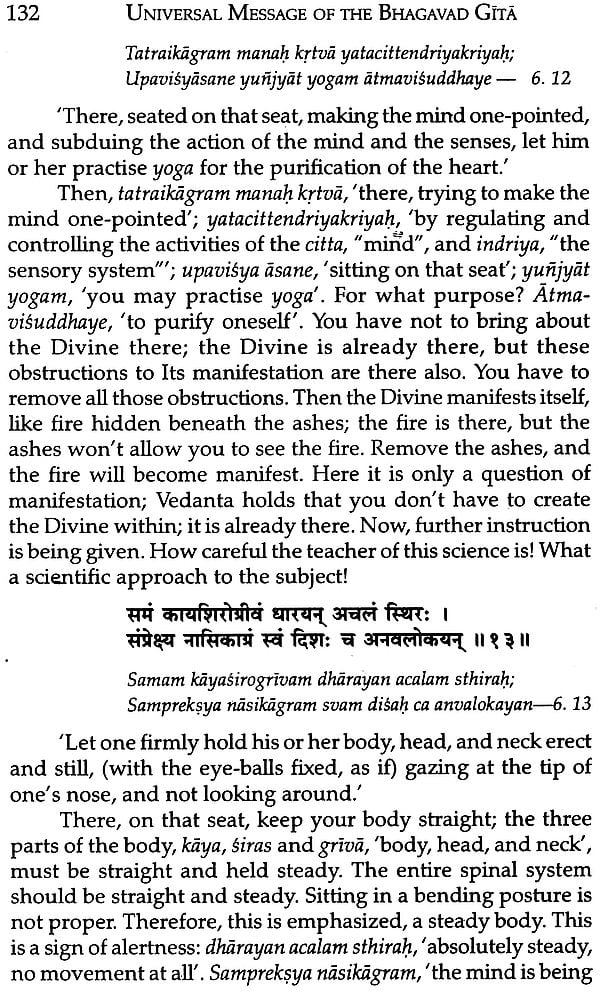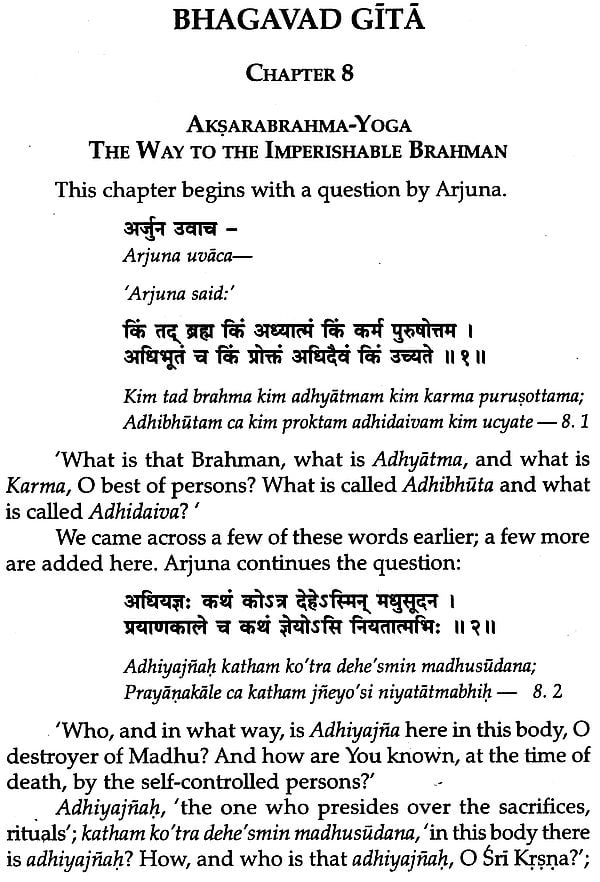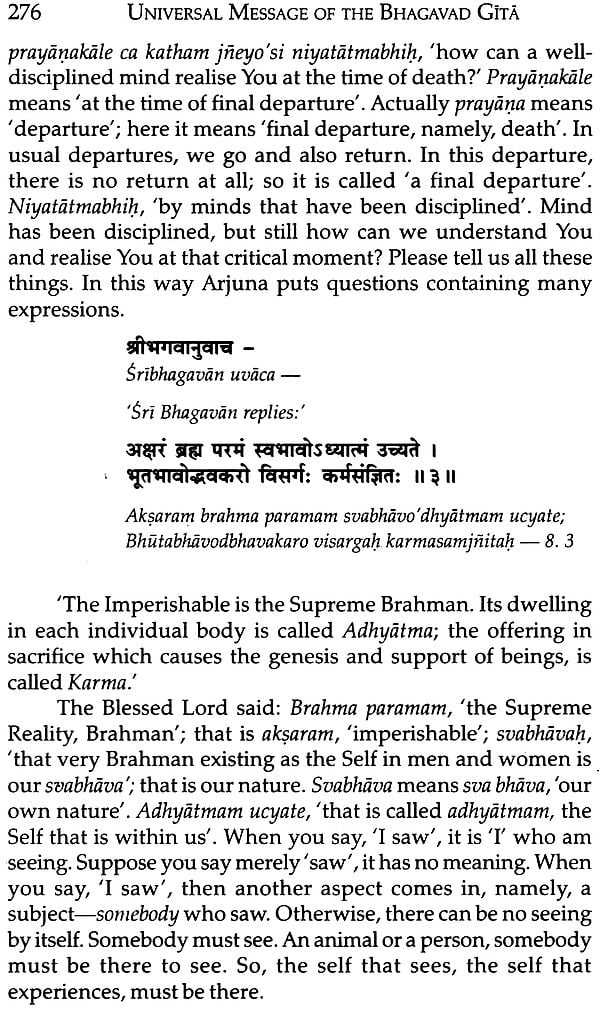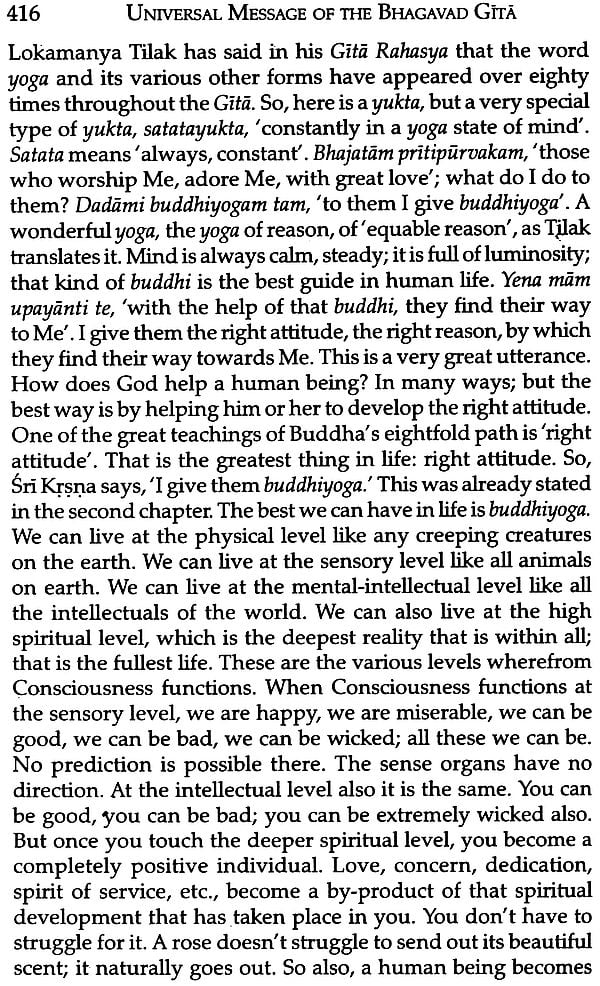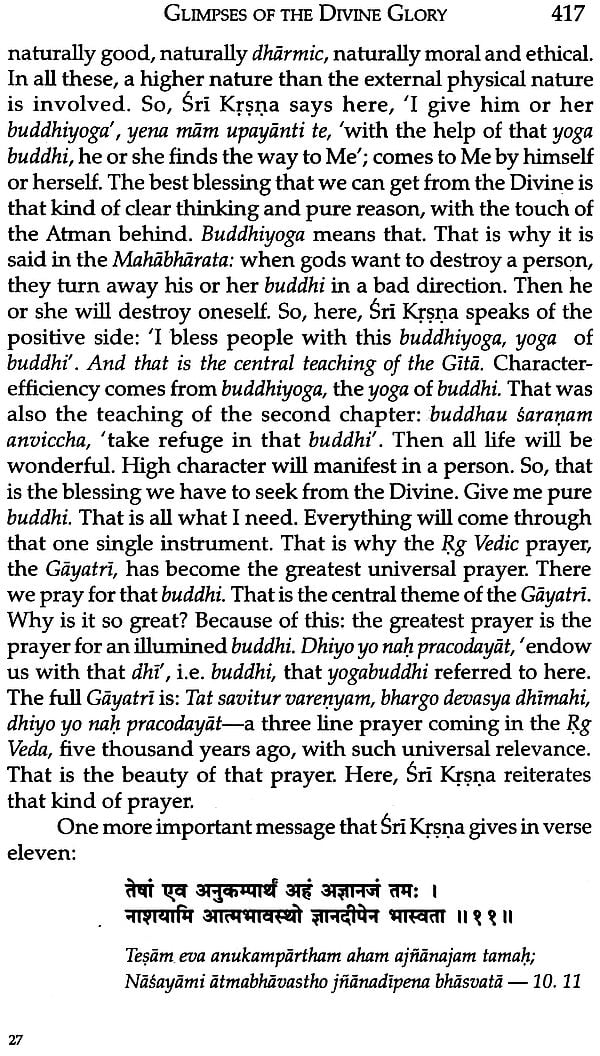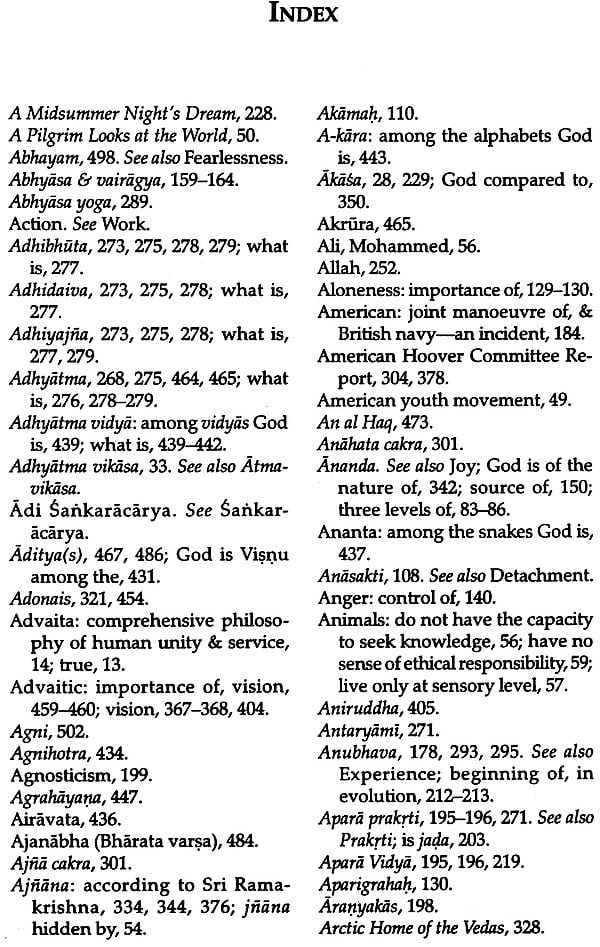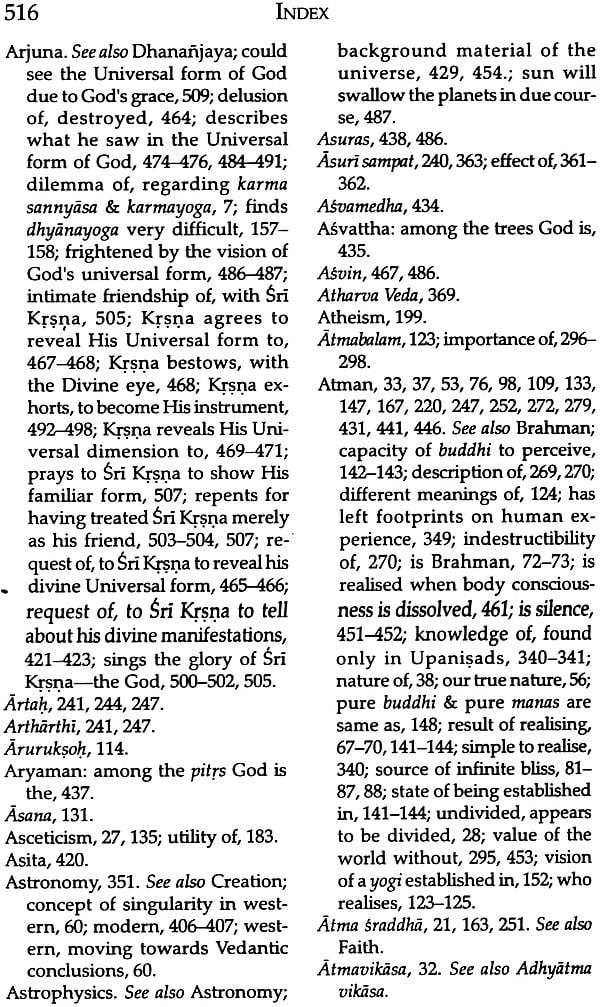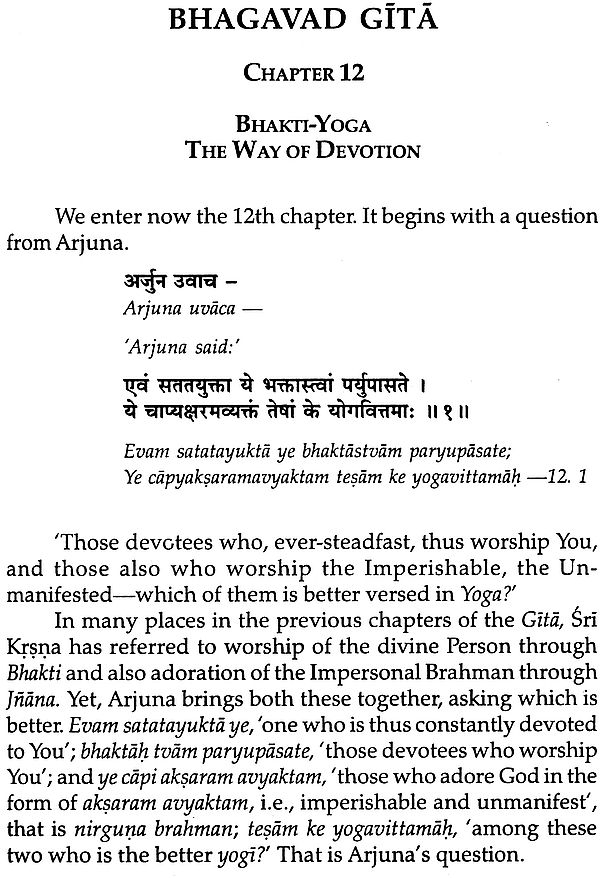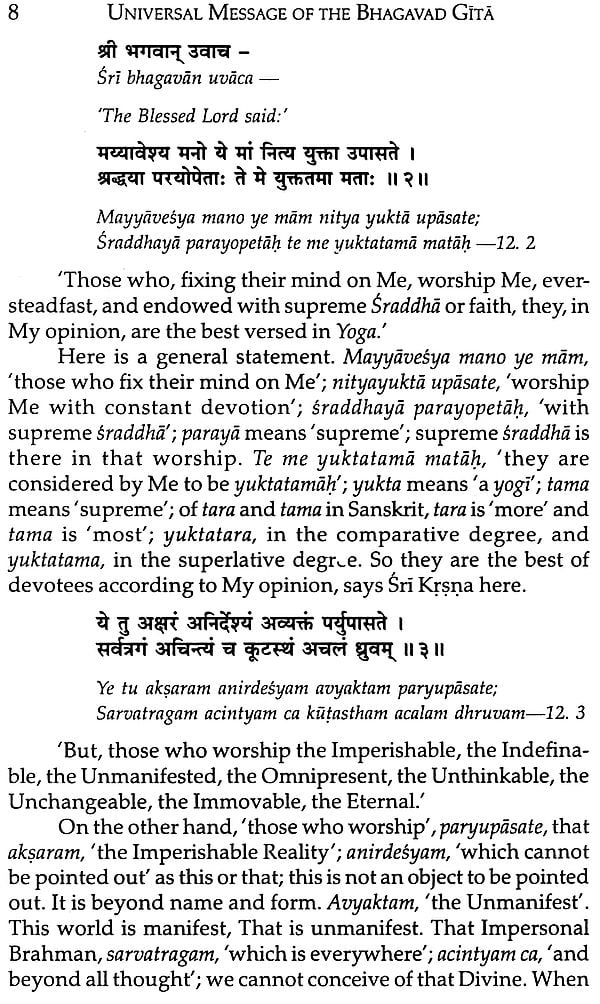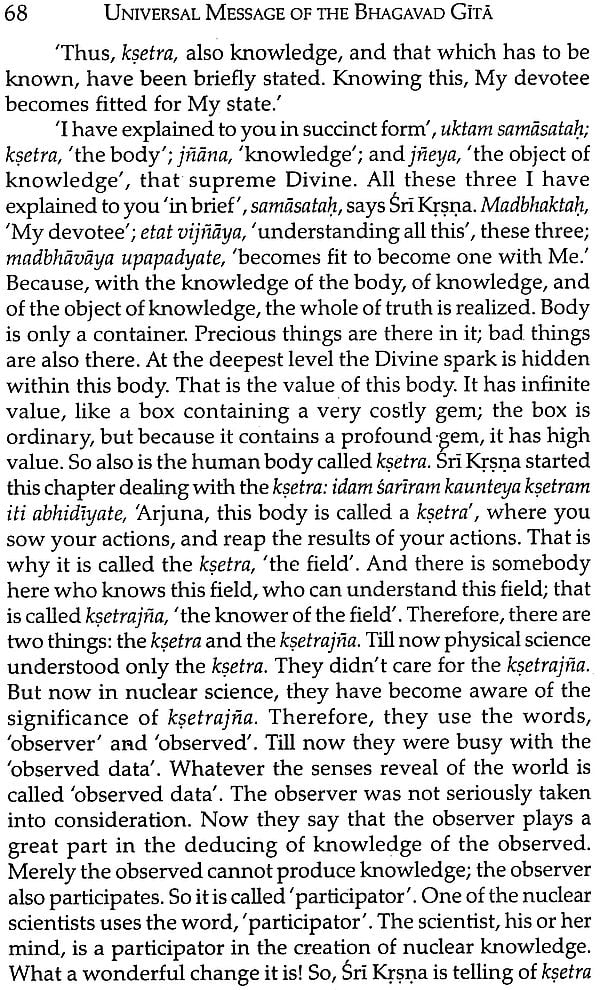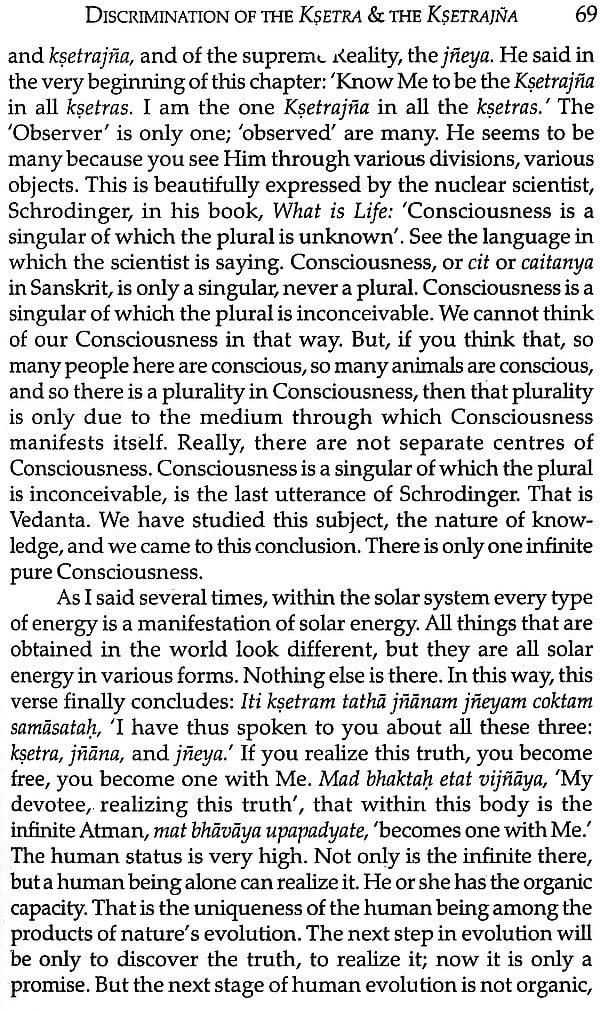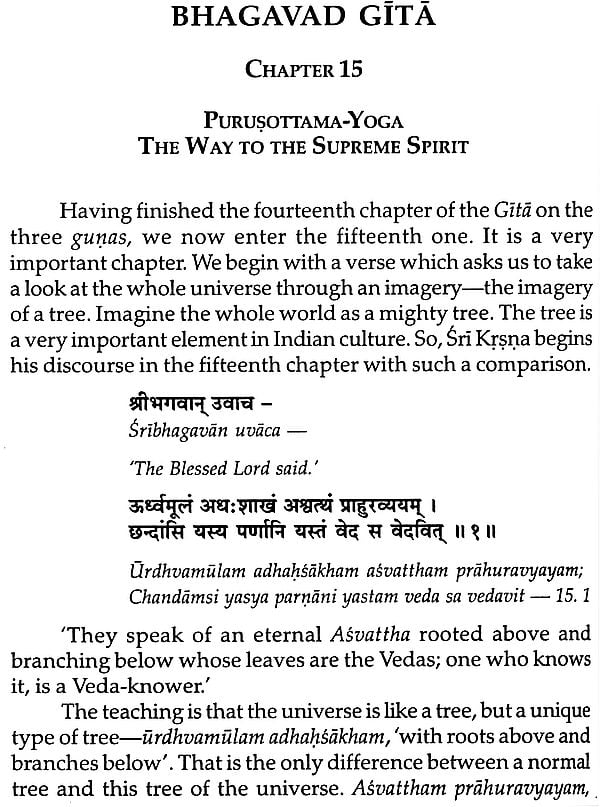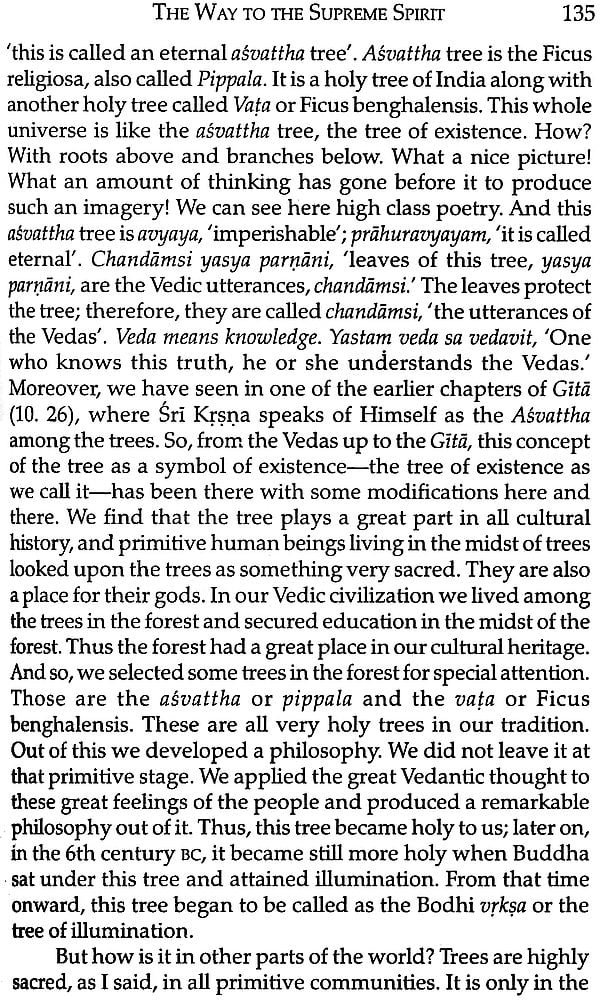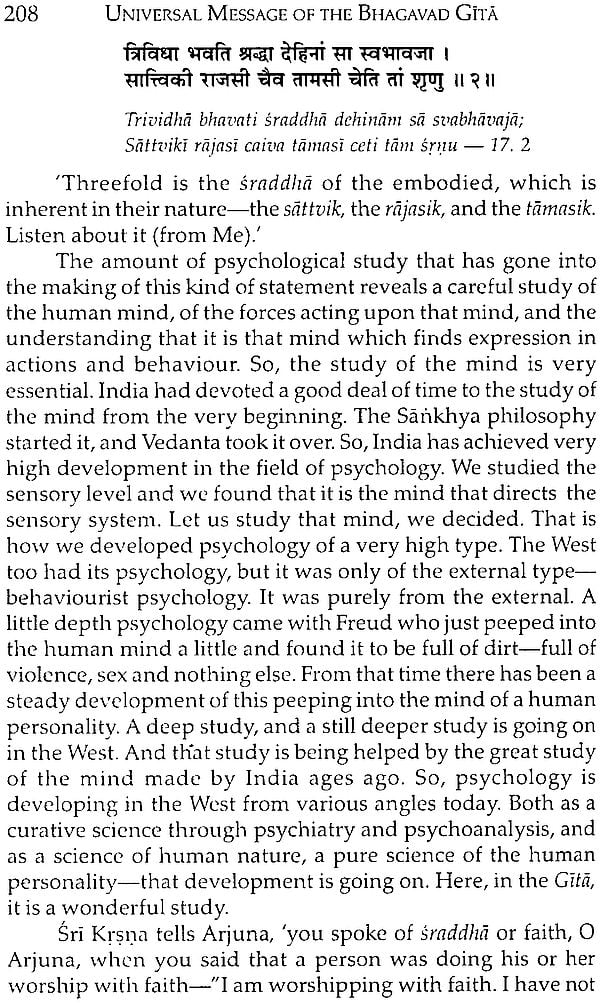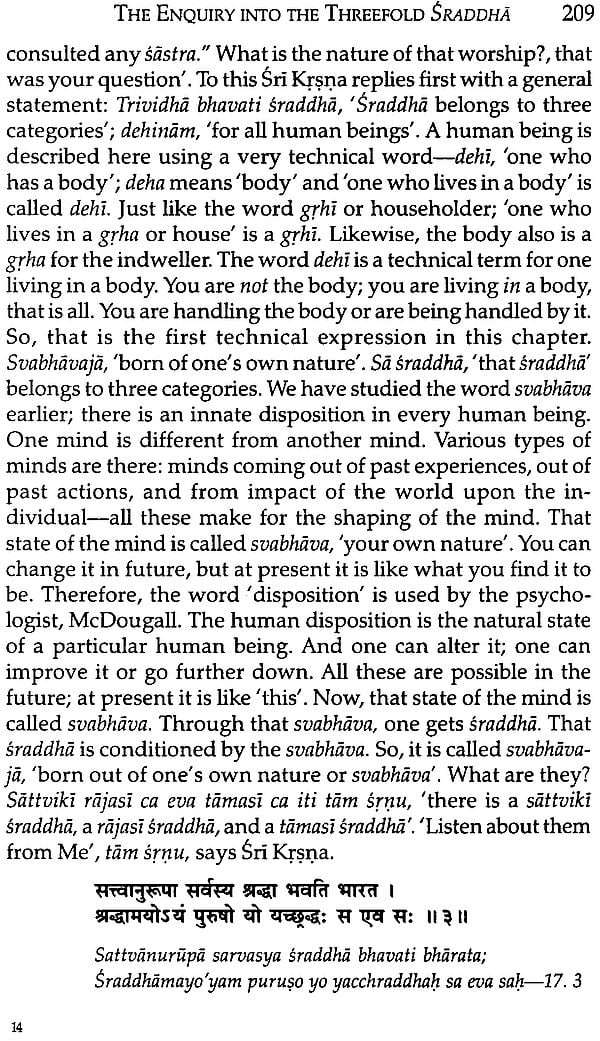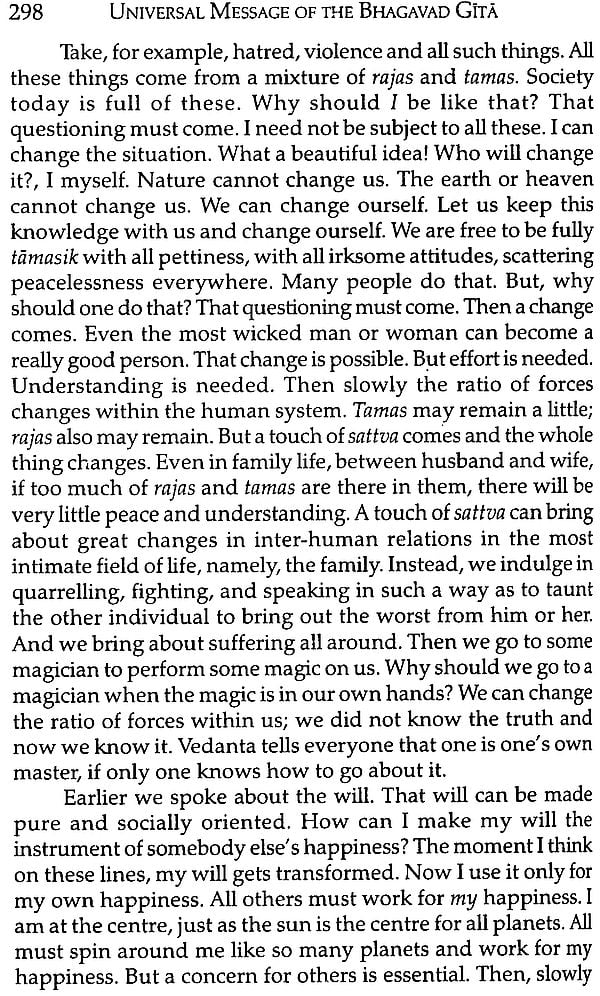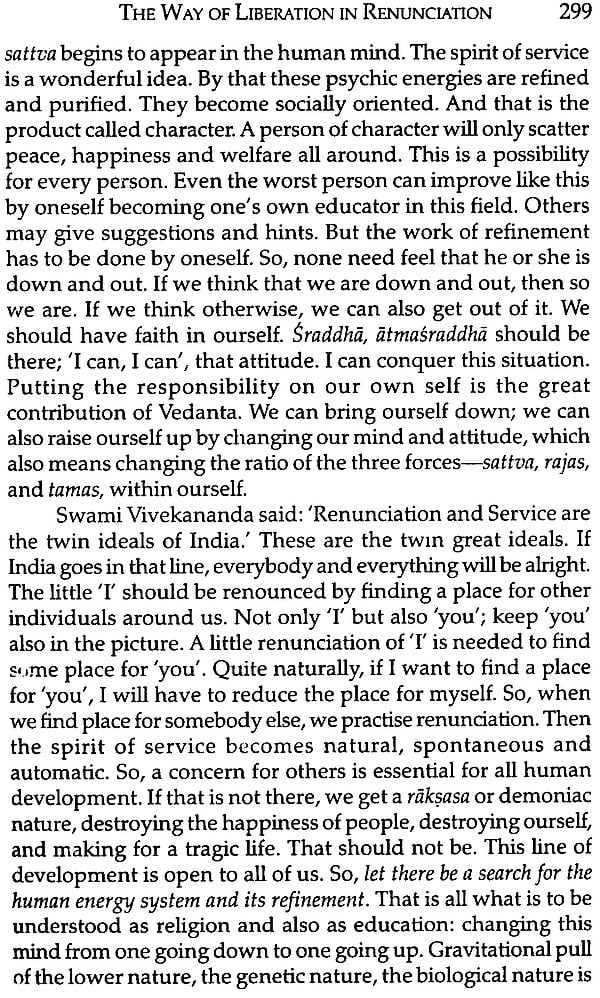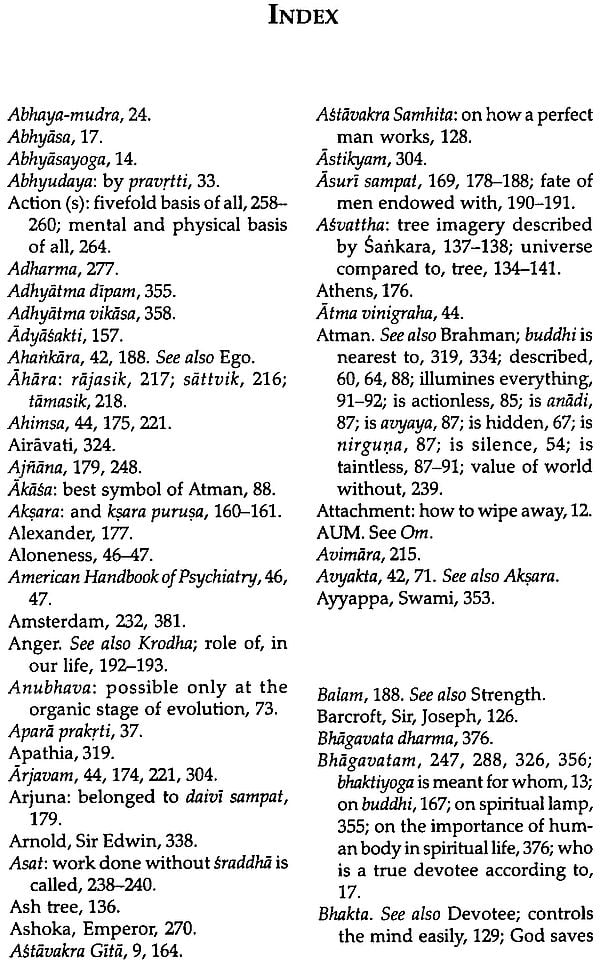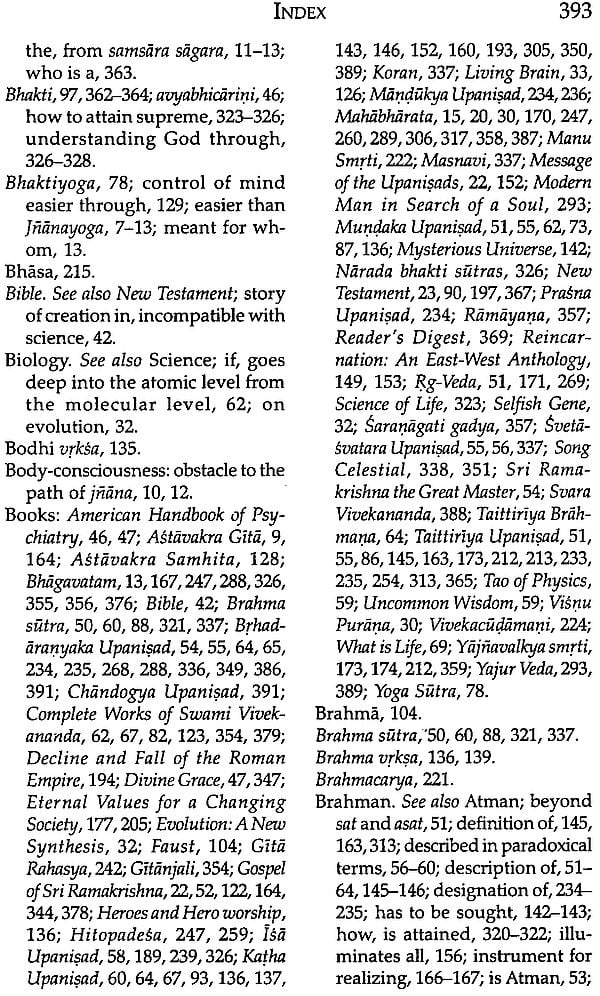
Universal Message of the Bhagavad Gita: A Commentary in the Light of Modern Thought and Modern Needs (3 Volumes)
Book Specification
| Item Code: | IDF097 |
| Author: | Swami Ranganathananda |
| Publisher: | ADVAITA ASHRAM KOLKATA |
| Language: | English |
| Edition: | 2021 |
| ISBN: | Vol. 1 8175052139; Vol. 2 8175052147; Vol. 3 8175052198; |
| Pages: | 1474 |
| Cover: | Hardcover |
| Other Details | 8.7 |
| Weight | 1.66 kg |
Book Description
This commentary was originally given as a series of Sunday discourses, from 1988 to 1990, at the 1200-capacity Vivekananda Hall of the Ramakrishna Math, Hyderabad, and it regularly drew an overflow audience consisting of a cross-section of the city population, including many youths.
These lectures, delivered extempore, were recorded, and the audio and video cassettes have reached many homes in various parts of India and abroad. The nature of the subject as well as its treatment by the speaker and his method of delivery, invariably held the attention and sustained the interest and enthusiasm of a large and varied audience. Packed with many stimulating and delightfully refreshing ideas, and drawing upon the works of eminent national and international poets, scientists, authors, and historians, this commentary explains the universal and humanistic teachings of The Song Celestial, as Edwin Arnold called the Gita, in the context of modern thought and modern needs. Thus it is bound to keep the readers absorbed from beginning to end. This three-volume work on the Gita also makes a wonderful companion to the Swami's Message of the Upanisads, published by Bharatiya Vidya Bhavan, Mumbai, now in its seventh edition, which contains an appendix of the Swami's correspondence with the biologist, the late Sir Julian Huxley, on the book.
In transcribing the lectures from the audio cassettes, we have received substantial help from Swami Satyapriyananda of the Ramakrishna Mission, as well as Sanskrit scholar and Vedanta Student, Miss Dana Sugu of Romania whose translations of several Upanisads into Romanian have been published in Bucharest. These lectures on the Gita were thoroughly edited by Swami Ranganathanandaji with the help of Swami Satyapriyananda. Brahmachari Saswatachaitanya, and Swami Nischalananda. As Swami Ranganathanandaji is 91 and is in frail health, without their devoted help, the author says, this work could not have come out.
Introduction
We shall being with a Santipatha or Peace Chant of the Upanisads:
Sahaviryam karavavahai,
Tejasvinavadhitamastu;
Ma vidvisavahai;
Om santih, santih, santih-
'Om, May God protect us (teacher and students) together. May we be nourished together. May we attain vigour together. May we become illumine by this study. May we not hate each other. Om, peace, peace, peace.'
PREFATORY REMARKS: INDIA'S ERSTWHILE MISUNDERSTANDING OF THE GITA
We shall commence the study of the Bhagavad Gita this evening. The first three chapters convey the central theme of the philosophy and spirituality of Yoga, which Sri Krsna refers to at the beginning of the fourth chapter. That philosophy is enriched in the remaining fourteen chapters. But the core of his original message has been expounded in chapters two and three. It is a book that is meant to be a help to realize the eternal spiritual reality within all men and women, along with the humanistic objectives, which we have in our constitution and also those which humanity is seeking in the modern age. That is why this Gita message is spreading now in various parts of the world. So far as we are concerned, we have to approach this study in this modern period from a point of view different from our traditional way. in the past, people mostly read the Gita as a pious act, and for a little peace of mind. We never realized that is a book of intense practicality, that this is the greatest book of practical Vedanta capable of helping us to create a society of fully developed human beings. We never understood the practical application of the Gita teachings. If we had done so, we would not have had the thousand years of foreign invasions, internal caste conflicts, feudal oppressions, and mass poverty. We never took the Gita seriously; but now we have to. We need a philosophy that can help us to build a new welfare society, based on human dignity, freedom, and equality. That is what we have set before ourselves in modern India, and that is also what is inspiring all the people of the world; and here in the Gita is a philosophy that will train people's minds and hearts in that direction. This orientation, a practical orientation, was given to the Gita for the first time in the modern age by Swami Vivekananda. Sri Krsna gave it several thousand years ago as a practical philosophy, but we converted it into a mere book of piety. When we read the Gita Dhyana Slokas-those remarkable verses on 'The Meditation Verses on the Gita,' we will find this idea there. The Gita is compared to the milk taken out of the cow, meaning the Vedas, by Sri Krsna, the milkman. What is the milk for? It is not meant for worship, but it is meant to be drunk for our nourishment. Then alone can one get strength. But all these hundreds of years, we took that glass of milk, worshipped it with flowers, and saluted it, but never drank it. That is why we are feeble, physically, mentally, and socially. That will change if we now start drinking this milk and assimilate it. That will help us to develop character strength, work efficiency, and a spirit of service, and to forge a new national destiny.
Travelling in various parts of India, I noticed this widespread misunderstanding among our people. But it was forcibly brought to my mind when I was in Hyderabad for a five-day programme of lectures, just after the Police Action in 1949, during my extensive tour of Andhra Pradesh enroute to New Delhi to take charge of the Ramakrishna Mission there. A friend suggested that I pay a visit to General J. N. Chowdhury, the Military Governor of the State. So, I went to meet him along with my friend who was my host there. General Chowdhury received us and did all the talking for the first half-an-hour and I listened. There was Communist insurrection in some parts of the state and he had to attend to the telephone quite often; but the conversation was going on. Then I noticed on his table a copy of the Gita. That gave me an opportunity to do the talking. 'General Chowdhury, do you read the Gita? I see the book on your table,' I asked. In a very tired way he replied,' Of course, when I feel tired and want to find some peace of mind, I read a few lines from the Gita. I said firmly, 'That is not its purpose.' That remark took him by surprise and he asked, 'Do you mean to say that this book has other values than merely giving us a little peace of mind?' 'Yes, that book is not meant merely to give peace of mind; it is meant to give you strength to serve the people, to make you a responsible citizen. It contains a comprehensive philosophy of life and work.' He was amazed and asked me again and again, 'Do you mean to say that this book has a relevance to me as a Military Governor of this State?' I said, 'Exactly so. We must realize that men and women of action, of responsibility, have the need for a philosophy of life and action. The Gita provides that philosophy calling it by the simple work, "Yoga". We never understood it till now. Take the opening verse of the fourth chapter of the Gita. Sri Krsna tells us there: "I gave this philosophy of Yoga to men of responsibility, so that, through this philosophy, they will become strong to serve and protect the people, to nourish the people." This is the purpose of this great book.' I stressed this again and again, and he asked repeatedly, 'Can I, the Governor of this State, learn any lesson from this book to become a more efficient person? 'Yes, that is the purpose of this book, to inspire all men and women of responsibility to work for the good of all. That is the nature of this book. It is not meant for putting you to sleep it is meant to wake you up. It is not merely to give you peace of mind. It is to give you that tremendous humanistic impulse and resolve, to work for the good of all in society.'
He was very happy. An hour passed and I asked him, 'Have you read any book of Swami Vivekananda?" Yes, I have read some small books of has sayings.' I said, 'That won't do! I want you to read one particular book, his lectures in India known as Lectures from Colombo to Almora These lectures awakened our nation and threw up great patriots who fought for the freedom of our nation. Man-making and nation-building is its theme. I shall send to you from Delhi a copy of it with my autograph, provided you promise to read it. I do not want to waste a book.' 'Yes, I shall read it,' be said. Then I took leave of him. The next day, I went to Delhi and from there I sent that book, and he wrote to me a nice letter of thanks. Later on, when he was our High Commissioner in Canada, he took my permission to publish, in French, the first lecture Essence of Indian Culture from the first volume of my book Eternal Values for a Changing Society, for spreading among the French citizens of Canada, a knowledge of Indian Culture.
From this experience I understood that millions of people in India treat the Gita like any of the stotras or hymns which we read every morning as a pious act. Today we need a philosophy to guide our footsteps, so that we can meet the challenges of developing the immense manhood and womanhood of India. It is that philosophy and spirituality that we get in the Gita. The message of the Gita was given on the tumultuous battlefield of Kuruksetra a few thousand years ago. The Gita alone represents such a philosophy. All other teachings were given in a temple, or a cave, or a forest. Here the student and teacher, Arjuna and Sri Krsna, were remarkable personalities; they were warriors. And the teacher, Sri Krsna, was a man full of compassion, and endowed with universal vision. The Gita is thus a heroic message from a heroic teacher to a heroic pupil. Its universality makes it applicable to any human being anywhere in the world, to make him or her realize one's fullest human possibilities. The Upanisads or the Vedanta expounded the science of human possibilities a thousand years earlier, and the Gita expounds the practical application of that science. Hence, Swami Vivekananda considered the Gita as the best book of practical Vedanta.
| Volume One | |
| Publisher's Preface | 3 |
| Hints on Transliteration and Pronunciation | 6 |
| Introduction | 9 |
| Prefatory Remarks: India's Erstwhile Misunderstanding of the Gita - First English Translation of the Gita - Greatness of the Gita Revealed through Adi Sankara - Gita Dhyana Slokas - Significane of Jnanamudra - Meaning and Significance of Tapas - Adi Sankara's Introduction to his Gita Commentary - Two Paths of Human Life: Pravrtti and Nivrtti - Two Fruits of these Paths: Abhyudaya and Nihsreyasa - Evils Arising from the Pedominance of Sensate Values - Brahmanatva: The Goal of Human Evolution - Bhagavan Buddha on the Brahmanatva Ideal - Vivekananda on the Divinity of Sri Ramakrishna - Indian Concept of Sruti and Smrti - Role of a Divine Incarnation in Advancing Human Evolution - Is America on Decline and How it can be Avoided - How India has Experienced Many a Decay but Avoided Death - Cultural Decay Avoided by Cross-fertilization of Cultures - Conclusion | |
| Chapter One | 69 |
| Chapter Two | 85 |
| Chapter Three | 255 |
| Chapter Four | 355 |
| Index | 491 |
| Volume Two | |
| Hints on Transliteration and Pronunciation | 4 |
| Chapter Five | 7 |
| Chapter Six | 107 |
| Chapter Seven | 188 |
| Chapter Eight | 275 |
| Chapter Nine | 335 |
| Chapter Ten | 399 |
| Chapter Eleven | 463 |
| Index | 515 |
| Volume Three | |
| Hints on Transliteration and Pronunciation | 4 |
| Chapter Twelve | 7 |
| Chapter Thirteen | 34 |
| Chapter Fourteen | 99 |
| Chapter Fifteen | 134 |
| Chapter Sixteen | 169 |
| Chapter Seventeen | 206 |
| Chapter Eighteen | 242 |
| Index | 392 |
